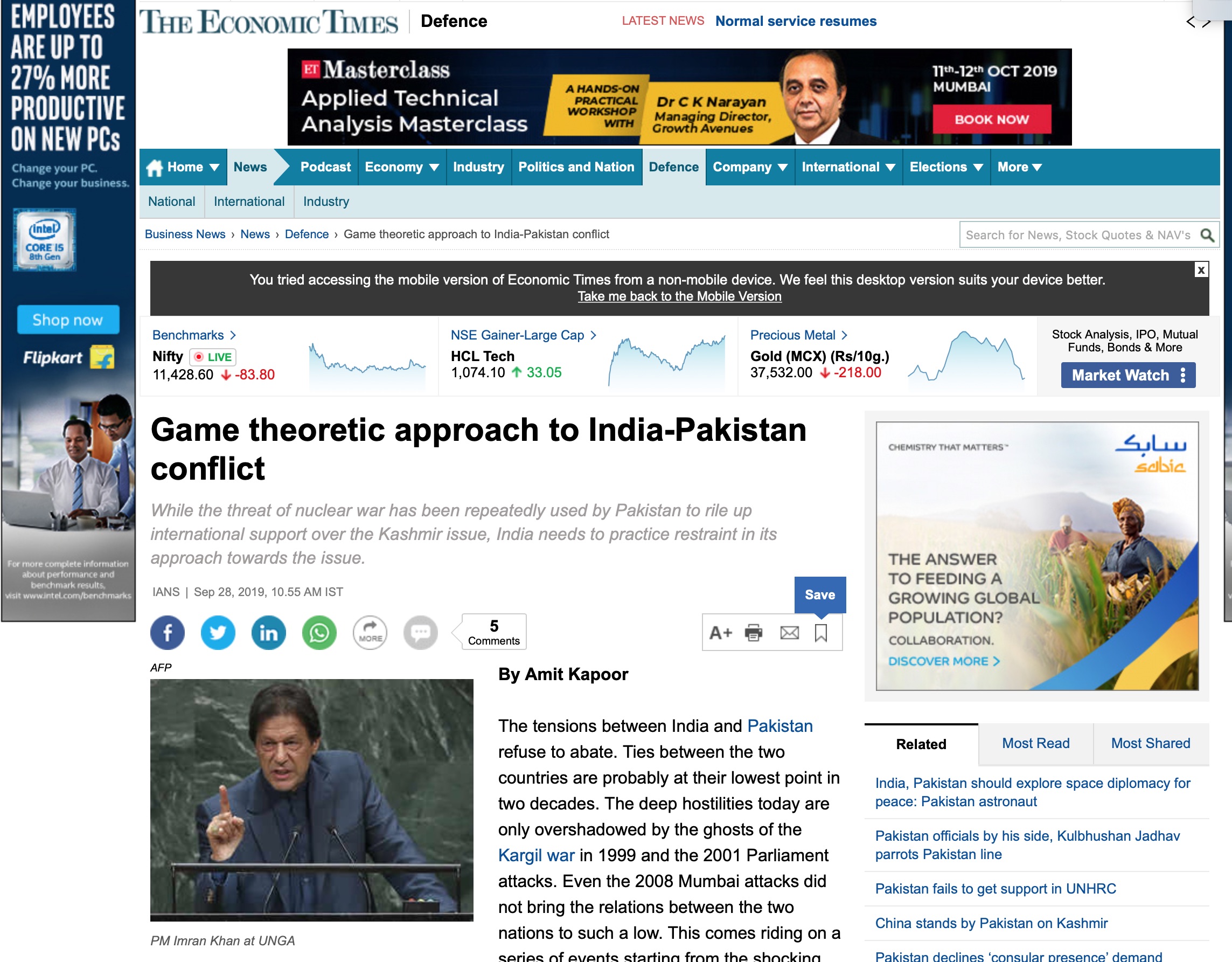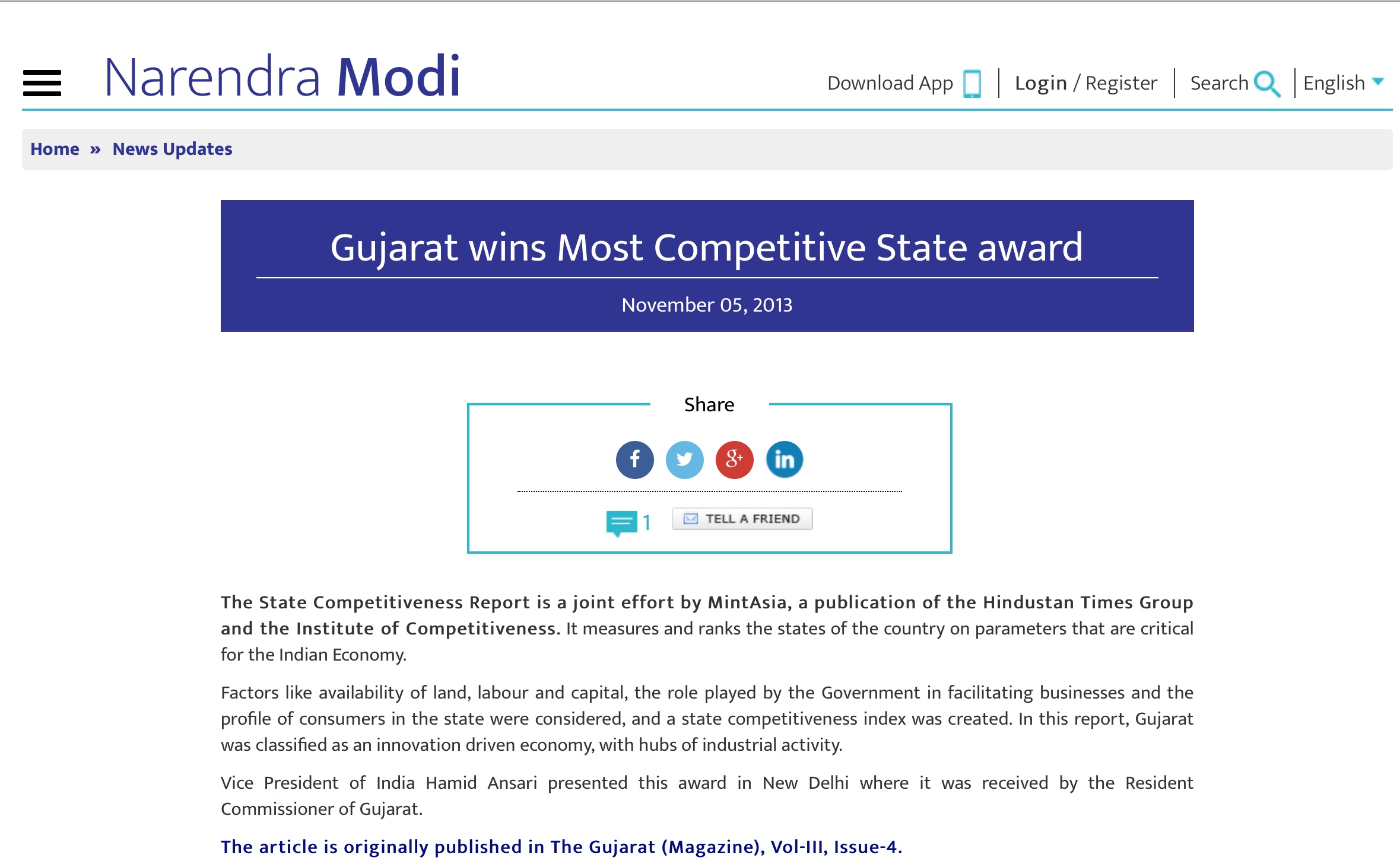The global dynamics of business and society are undergoing a major transformation. There are three schools of thought which guide the social and economic philosophy of the organizations. The first school of thought focuses on capitalism as the core purpose of the organization. The core purpose of an organization is to achieve business growth and generate profits thereby creating jobs, which leads to social impact for a particular section of the society. The success is measured by profitability and market share. The second school of thought talks about corporate philanthropy as an organization’s way of giving back to the society and community through financial donations or non-cash contributions like time, services and goods. The financially successful organizations also undertake the volunteering activity or donate a proportion of their wealth for the social/environmental issues in collaboration with non-government organizations, civil society organizations and government institutions. The choice of issues and nature of contribution is driven by the discretion of the top management. Corporate philanthropy is primarily considered to be a cost centre which involves redistribution of wealth from the existing pie to social/environmental issues. The third school of thought reflects upon corporate social responsibility (CSR) as a means of fulfilling the social/environmental responsibility. Social responsibility is a wider terminology as compared to corporate philanthropy and involves multi-dimensional activities like philanthropic contribution to the social/environmental issues, compliance with community standards, ensuring good corporate citizenship, ethical sourcing, transparent social/environmental reporting, and enabling sustainability initiatives. The focus areas and budgetary allocations are determined by the top management on the basis of personal preferences and other factors like brand building. Social responsibility is again a discretionary activity, which is considered to be a cost center as well as a brand building exercise.
Everybody realizes and acknowledges the significant contribution of these three schools of thought over the years in creating a social/environmental impact. However, despite the economic growth of nations and organizations as well as increasing levels of philanthropic and CSR activities, the rich-poor gap is widening. There is a growing disparity among nations and within nations. A major proportion of the global population still lives and transacts in an informal economy. The majority of the global economies are still considered to be developing or underdeveloped nations. Why? There are some missing links regarding design and delivery models, which is leading to these limitations. Amidst, all these happenings where corporate volunteerism and social responsibility initiatives face scalability constraints and have met limited success in bridging the socio-economic gaps, there is an emergence of Shared Value approach as a new wave of thinking and an innovative business idea, which redefines the nature of capitalism.
Shared value approach marks a transition from other methods regarding integrating the social/environmental issues as the core of the business model rather than aligning them into the business as a fringe activity. The concept is driven by identifying and expanding the connections between social/environmental and economic progress. Michael Porter and Mark Kramer introduced this concept in an article, which got published in Harvard Business Review during 2011. During 2011-2016, this concept has come a long way from raising questions to adoption to acceptance by the global organizations. It redefines the nature of capitalism in three ways. The first principle involves redefining the products and services offerings in congruence with the underserved social/environmental needs thereby exploiting the opportunities and addressing the social challenges. The second principle involves optimizing the value-chain by addressing the social/environmental issues thereby leading to cost efficiency, higher productivity, better quality and satisfaction of stakeholders. The third principle involves enabling local cluster development around the social/environmental issues thereby transitioning from the competitive orientation towards collaborative, inclusive, participative and outward orientation.
There are multiple dimensions, where shared value approach differs from others approaches (corporate philanthropy and social responsibility). The first dimension relates to the scope of the social/environmental needs. Shared value integrates the social/environmental need as the core of the business model whereas others categorize the same as a non-core or fringe activity. The second dimension is regarding profit orientation and stakeholder orientation. Shared value is driven by stakeholder’s orientation (employees, investors, customers, suppliers, regulators etc.) and focuses on long-term socio-economic impact thereby creating an inclusive business model. This inclusive business model is driven by technology integration, local embeddedness, and local engagement. Others are designed and implemented as add-on activities to the core having a focus on maximizing the profits for the shareholders. The third dimension relates to strategic orientation and competitive landscape. Shared value approach is all about business model innovations, which extend the opportunity landscape. Others focus on competing for limited resources and possibilities in the existing market while redistributing the proportion of the economic gains towards social/environmental issues. The fourth dimension is regarding the metrics and reporting. Shared value businesses design the metrics and evaluate their performance by socio-economic outcomes. Others focus primarily on financial attributes to assess and report their performance.
Realizing the inclusiveness, completeness and relative advantages of shared value approach, increasing numbers of existing global organizations as well as new entrants are adopting this approach to drive new business models and ideas for underserved social/environmental issues. There are examples of organizations in India like Nestle, Mother Dairy, Hindustan Levers Limited, Jain Irrigation and Vaatsalya; which have designed their product and service offerings as well as configured their value-chain around shared value concept. However, shared value concept is still in a stage of infancy. Some organizations have adopted this approach while others are still in experimenting or waiting mode. The orientation, belief, and acceptance of shared value approach are going to increase further in the coming years as awareness will increase, and success models will become more apparent. This method may not be able to address all types of social/environmental needs, especially related to specific socio-economic segments like extremely poor individuals. Neither does it make other initiatives like corporate philanthropy and social responsibility redundant. The government institutions, non-government organizations and civil society organizations will continue playing an important role in identifying, raising and targeting the unmet social/environmental needs as well as in fulfilling the needs of extremely poor. The organizations focusing on capitalism, corporate philanthropy, and social responsibility initiatives will continue making a positive socio-economic impact. Shared value will act as a complementary approach to these efforts in enabling the holistic socio-economic and environmental transformation of communities and countries at a faster pace.
Published with Business Insider on August 31.























